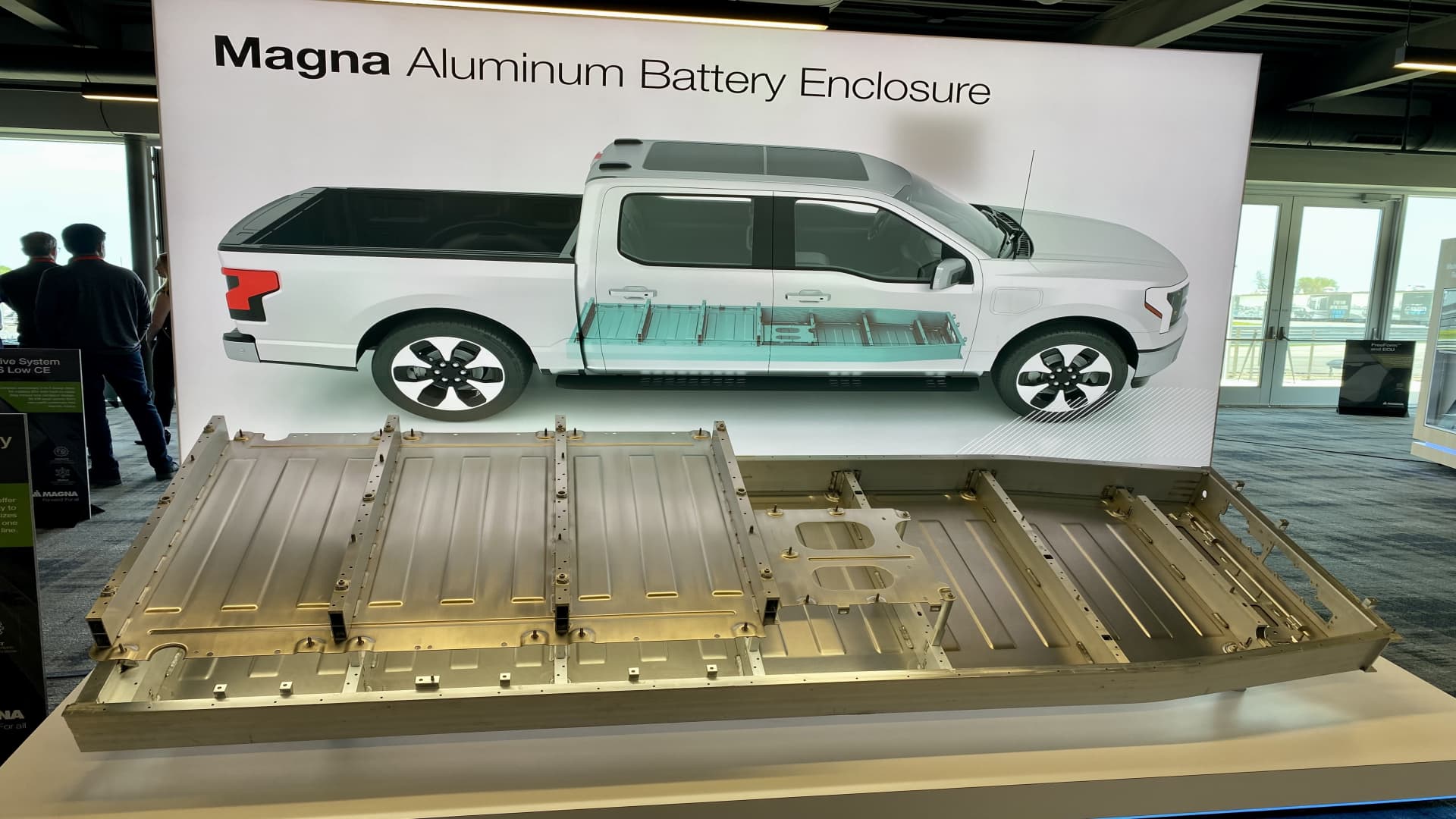
Ford F-150 Lightning pickup trucks sit on the production line at the Ford Rouge Electric Vehicle Center on April 26, 2022 in Dearborn, Michigan.
Bill Pugliano | Getty Images
Ford Motor said Thursday that it has secured 100% of the battery supplies needed to deliver electric vehicles at a rate of 600,000 per year by the end of 2023 – and that Chinese battery giant Contemporary Amperex Technology will help it get to a rate of 2 million EVs per year by 2026, while reducing the costs of some of Ford’s most popular electric models.
Investors and Wall Street analysts have questioned whether global automakers like Ford will be able to source the batteries and raw materials needed to hit their ambitious EV sales targets. Ford’s announcements were part of a larger presentation intended to show that it has already secured much of the supplies it will need.
“Ford’s new electric vehicle lineup has generated huge enthusiasm and demand, and now we are putting the industrial system in place to scale quickly,” Ford CEO Jim Farley said in a statement. “Our Model e team has moved with speed, focus and creativity to secure the battery capacity and raw materials we need to deliver breakthrough EVs for millions of customers.”
“Ford Model e” is the company’s electric-vehicle division.
Ford said that it will begin offering vehicles with lower-cost lithium iron phosphate (LFP) batteries from Contemporary Amperex, better known as CATL. While LFP batteries provide somewhat shorter range per pound than Ford’s current batteries, they also cost about 10% to 15% less, Ford said – and they will reduce the company’s reliance on minerals such as nickel that are expected to be in short supply over the next few years.
Ford will begin offering its Mustang Mach-E with CATL-supplied LFP battery packs next year, and will expand the option to its F-150 Lightning pickup truck in early 2024.
At the same time, Ford will lean on its current battery suppliers, the Korean companies LG Energy Solution and SK On, to meet its late-2023 production targets and to help it get to at least 2 million EVs per year by 2026.
Ford said as of now, it has already secured about 70% of the battery capacity needed to support that latter goal. The automaker has signed a non-binding memorandum with CATL to explore a larger relationship that could make up much of the remaining ground, it said.







